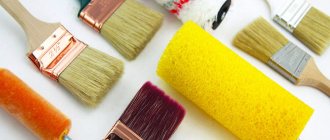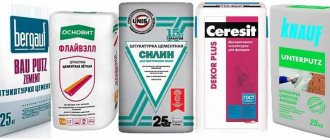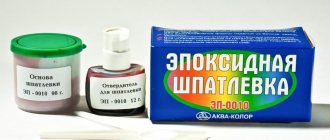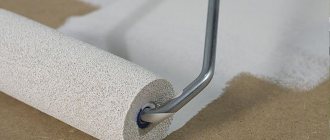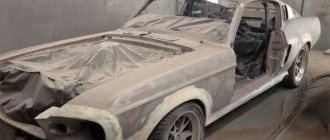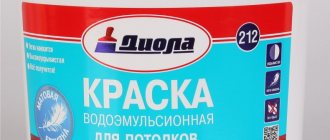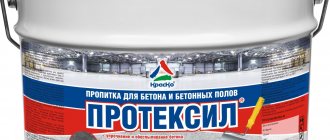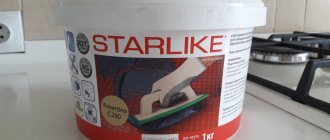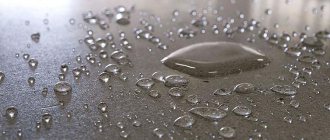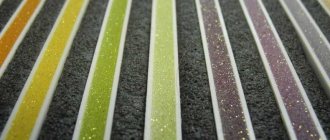Epoxy primers (primers) are one of the best options for primer mixtures for preliminary preparation for finishing concrete bases. The use of soil allows you to achieve significant strengthening of the concrete base, but the mixture is also suitable for treating other types of surfaces: it will eliminate cracks, roughness and unevenness on wooden, plaster, and plastered bases.
The peculiarity of epoxy primer is that it is produced on the basis of epoxy resins and therefore, in its finished form, the solution acquires unique properties, a detailed review of which will be presented below.
Epoxy Floor Primer
Epoxy resin belongs to the group of high-quality materials with improved properties. Epoxy floor primer is a unique product that is highly flexible, provides excellent adhesion to concrete and flooring, and repels moisture, providing protection against corrosion and rot.
Why do you need to apply a primer under a self-leveling floor?
The primer composition is a material that is required for application both under any paint and under self-leveling floors. At first glance, an optional step contributes to the performance of important functions:
- protects the base from the penetration of moisture from the covering - creates a barrier to the occurrence of mold, mildew and overuse of the top material;
- fills pores and small cracks in concrete, making it smooth and convenient for distributing the polymer mixture - speeds up work;
- fastens unstable areas in cement, protecting the surface from chipping, deformation, and cracking;
- improves the adhesion of the floor covering to the base, prevents peeling and the formation of voids with air;
- increases the resistance of the polymer coating to impacts and other influences;
- protects the top layer from cracking and makes drying more uniform.
A properly processed concrete slab produces dust even after being treated with a construction vacuum cleaner. Primer eliminates this drawback, making the surface ideal for finishing. The material must be applied both under a new concrete screed and under self-leveling floors - this stage is mandatory in construction technology.
Scope of use
Painting with epoxy primer is in demand not only when working on a vehicle - this type of substance can be used to coat other large objects, but only metal ones.
Important! The primer for concrete work should not be confused with the one used for metal work. These are completely different products in composition, and the result of the work can be unpredictable, not in the positive sense of the word.
In general, “epoxy” can be used in the following cases:
- on top of “bare” metal - it can be either steel or aluminum;
- over a mixed surface - with putty;
- as a final insulating layer;
- as a means of improving surface resistance to mechanical damage;
- application to fiberglass parts, but only as the first layer.
In any case, before you start treating the surface, you need to carefully read the instructions and make sure that this particular type of primer is suitable for a particular type of surface.
Epoxy primer for metal SG 34
Epoxy primer for concrete floors: advantages
The construction market offers different types of primer compositions. Of these, “epoxy” is considered one of the best. The reason is its properties:
- high level of adhesion to any surfaces - concrete, wood, tiles, brick, metal;
- versatility - suitable for different types of bases;
- does not spread fire and smoke - it is a fireproof material;
- easy to use - does not require special preparation before application;
- protects well from moisture – has water-repellent properties;
- extends the service life of the material to which it is applied;
- wear resistance;
- elasticity – does not crack, dries evenly;
- dries in a short time - the finishing can be applied the very next day after applying the primer.
One- and two-component protective compounds
The number of one-component epoxy primers on the market is extremely limited. First of all, the fact that few car owners agree to wait several days until the applied composition completely polymerizes. In addition, such epoxy resins begin the polymerization reaction only after contact with atmospheric oxygen, which is a component necessary for the conditions of this reaction.
The presence of such a weak reagent weakens the structure of the frozen polymer, since the presence of oxygen in complex molecules makes them easily broken. Which is reflected in low resistance to impact and tearing.
Basically, such epoxy compositions are used for treating concrete and wooden surfaces, to improve moisture-proof and adhesive properties, for connection with linoleum, laminate or parquet boards.
In addition, oxygen-air-curing epoxy primer formulations have poor corrosion protection properties.
Unlike one-component primers, two-component types of primers, with fillers introduced into them, are often produced or manufactured on site for the specific type of surfaces they cover.
An example is ship steel, which is coated with a primer based on two-component epoxy while still on the slipways of shipyards or during dock repairs, after stripping the metal of old paint.
In such cases, lead or iron lead is introduced into the resin compound as fillers, which by itself, combined with any solvent, has excellent adhesion to the steel sides of ships, and epoxy resin also strengthens it. The only difficulty when mixing miniums with the compound is the excessive thickness of the resulting mixture. In such cases, the resin is diluted with acetone in a ratio of 20 to 1. In addition, antiseptics can be added to the composition before mixing with the hardener to prevent the fouling of their bottoms by algae and mollusks during the operation of ships.
Useful to know > Which epoxy resin should be used for a completely transparent volumetric fill
Epoxy compounds are applied with rollers made of foamed silicone or polypropylene structured with bristles; these materials are not subject to the adhesive effects of epoxy resins; epoxy-based paint rolls off easily after finishing work and is just as easily washed off with organic solvents (alcohol, acetone).
Such painting is effective not only for large vessels and ships, but also for small boats and motor boats if their hulls are made of metal. For fiberglass hulls, such a primer is also useful, only without adding red lead.
Epoxy primers must not be coated with polyvinyl chloride or alkyd based paints. Only the same epoxy or acrylic paints can be applied over them; others will be rejected or destroyed in interaction with epoxy after a short time.
How to choose a primer for floors?
A special type of soil is used for the flooring - this is written on the packaging. Types offered by building materials trading companies:
- quick-drying – used as an express option for finishing work, easy to apply, quickly saturates concrete and dries in a short time;
- standard - suitable for application under self-leveling mixtures based on polyurethane and epoxy, used for finishing residential and commercial premises with heating;
- winter - used to form coatings that will be used at temperatures down to zero degrees;
- anti-corrosion – has increased protection against moisture penetration, recommended for rooms with high humidity.
The material is selected depending on the purpose of the room, the level of load on the floors and temperature conditions.
How to properly apply epoxy resin primer
Construction work is carried out at above-zero temperatures. This is necessary for uniform and complete drying of materials, preventing swelling and other deformations. Progress:
- Preparing the base. Concrete must be thoroughly cleaned of dust, potholes and cracks must be repaired using putty. Before applying the primer, the surface is treated with a construction vacuum cleaner. Old paint is removed, greasy stains are cleaned and unstable areas that are crumbling are repaired.
- Preparation of material. The mixture is mixed in one container. For a large amount of soil, use a construction mixer; if there is only a small amount of soil, just mix with a spatula. The procedure is repeated until a homogeneous mass is formed.
- The mixture is applied to the surface using a roller - with a short or long handle, as convenient. For large areas, it is recommended to work with a roller on a bar.
- Application is carried out in at least two layers. The direction of movement of the shafts when applying the second layer is perpendicular to the first. If the concrete is old, with large pores, three layers need to be made.
The peculiarity of the mixture is that it dries quickly, so work must begin immediately after diluting the primer. When servicing a large area, it is important to correctly calculate and prepare the amount of material that workers can apply in half an hour.
Order polymer floors with high-quality priming from.
#Floor#Self-leveling#Industrial#Epoxy#Dust-free
Facebook Comments
Features of using aerosol
Epoxy primer in the form of an aerosol is used as an anti-corrosion coating; it should be used on the following surfaces:
- galvanized;
- made of ferrous metal;
- light alloy.
Can also be used as a base for various enamels.
Epoxy primer in aerosol form
Important! The following types of enamels are incompatible with this type of epoxy primer:
- alkyd-acrylic;
- alkyd-urethane;
- polyvinyl chloride.
It is better to use soil in such a container to eliminate small defects.
The surface must be prepared according to the algorithm described above. The further work algorithm is as follows:
- The can must be shaken well;
- spraying should be carried out at an angle of 90 degrees;
- the balloon dispenser should be located at a distance of 20–30 cm from the surface to be treated;
- the substance should be applied in 2-3 layers with a time interval of 25–30 minutes;
- You need to spray the primer smoothly, without stopping in one place.
Important! Use protective equipment while working (respirator, gloves).
BOLL Epoxy primer in aerosol 500ml

